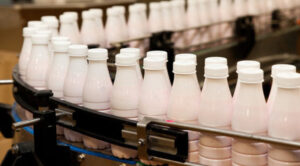
In March 2025, dairy farms of all categories of producers produced 556 thousand tons of raw milk, which is 117 thousand tons or 27% more than in February 2025, but 20 thousand tons or 4% less than in March 2024, according to the Association of Milk Producers (AMP).
The industry association noted that the volume of milk yield in Ukraine in January-March 2025 amounted to 1.44 million tons, which is 53 thousand tons (-4%) less than last year. In March 2025, the share of enterprises in the production of raw milk amounted to 49%, and households – 51%.
According to the report, in March 2025, enterprises produced 272 thousand tons of raw milk, which is 33 thousand tons more (+14%) compared to February 2025 and 16 thousand tons more (+6%) compared to March 2024. In January-March 2025, MTFs produced 771 thousand tons of raw milk, which is 37 thousand tons (+5%) more than in the previous year.
In March 2025, milk yields in private households amounted to 284 thousand tons, which is 84 thousand tons more (+42%) than in February 2025, but 37 thousand tons less (-11%) than in March 2024. In January-March 2025, the private sector produced 676 thousand tons of raw milk, which is 90 thousand tons (-12%) less than in the previous year.
AVM analyst Giorgi Kukhaleishvili emphasized that in the first quarter of 2025, the number of regions where MTFs increased their production of raw milk increased. Khmelnytsky, Ternopil and Zhytomyr regions are among the new leaders in terms of production. However, the increase in milk yields in the industrial sector is not entirely beneficial for the dairy industry amid the unstable situation on the finished dairy products market, the global dairy market, and the unstable dynamics of purchase prices.
“The volume of dairy production in Ukraine is currently outstripping the volume of its sales. The domestic market is experiencing a decline in demand for dairy products amid intensified rocket and bomb attacks by the Russian occupiers on cities with a population of over a million people and the outflow of their residents abroad. At the same time, dairy processing enterprises are striving to help restore demand for dairy products from the population through discounts and promotional offers in retail chains,” the business association explained.
Further increase in cheese imports is also a threat to the development of the industry, at the current rate of imports, by the end of 2025 the share of imported cheese in the Ukrainian market may reach 80%, which will force domestic cheese factories to stop their work and the situation with a surplus of milk may worsen.
The EBA emphasized that the potential threat of foot-and-mouth disease, which has been reported in Hungary and Slovakia, is a challenge for the Ukrainian dairy industry.
“The spread of the disease creates risks of increased culling of infected livestock and the introduction of quarantine restrictions on farms, a ban on the export of dairy products from Ukraine,” the industry association summarized.
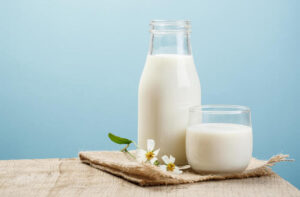
In January-February 2025, Ukraine produced 0.9 million tons of milk, which is 3.5% less than in the corresponding period of 2024, according to Infagro, an industry information and analytical agency.
In February, agricultural enterprises produced 1.7% more milk than in February 2024. Given that 2024 was a leap year, the annual growth in February was 5.3%, analysts said.
Experts emphasized that as of March 1, there were 1.15 million cows in Ukraine, which is 8.4% less than on the same date last year. Official figures for the number of cows in agricultural enterprises showed a negative annual trend with a slight decrease of 0.1% by March 1, 2024.
“In April, we can expect stabilization of the milk market due to the growth of overall demand, which means that the rate of decline in purchase prices will slow down, price revisions will become pointwise,” Infagro emphasized.
At the same time, in March 2025, the purchase price of raw milk in Ukraine continued to decline, with prices returning to approximately the level of September 2024. The March price correction was more severe than in February. Competition for raw materials has resumed due to the projected growth in promotional sales of dairy products in the domestic market and increased European demand for Ukrainian goods, especially butter.
Analysts noted that the supply of raw materials in the domestic market continues to grow. New production facilities and new projects in the dairy industry are being launched. Therefore, the pressure on the price of milk is still there.
The average cost of raw materials in March 2025 in agricultural enterprises was 16.6 UAH/kg excluding VAT, which is 5.1% lower than in February, but 15% higher than in March 2024; the cost of raw materials from the population was 10.5 UAH/kg excluding VAT, which is 4.1% lower than in February, but 14% higher than in March 2024.
The range of milk prices at the end of March was mainly from agricultural enterprises – 15.8-17.0 UAH/kg excluding VAT, and from households – 9.5-11.0 UAH/kg excluding VAT.
“The estimated margin of milk production continued to decline in March. The average estimated operating margin in March amounted to 15%, which is 7 points less than in February and 29 points lower than in March 2024,” Infagro summarized.
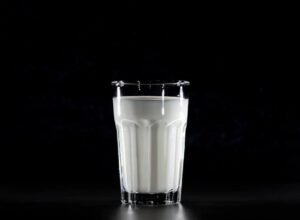
Milk prices in Ukraine continue to decline, as of March 25, the average purchase price of extra milk was 16.35 UAH/kg (excluding VAT), which is 0.45 UAH less than a month ago, according to the Association of Milk Producers (AMP).
According to the report, premium milk costs an average of 16.15 UAH/kg (excluding VAT), which is 0.50 UAH less than last month, and first-class milk costs 15.65 UAH/kg (excluding VAT, 0.35 UAH lower).
Accordingly, the weighted average price of the three grades is 16.20 UAH/kg (excluding VAT), which is 0.40 UAH less than a month ago.
“Purchase prices in Ukraine continued to move downward in the second half of March. However, the surplus of raw milk on the market, which puts pressure on purchase prices, decreased compared to the first half of March due to an increase in dairy exports from Ukraine and a certain increase in domestic consumption,” said AVM analyst Giorgi Kukhaleishvili.
He added that Ukrainian consumers are used to high prices for dairy products. Dairy processing plants stimulate consumption of dairy products in Ukraine by offering promotional discounts on their products in retail chains. The profitability of skimmed milk powder and butter production has improved, but deteriorated in the case of cheese and casein.
The industry association predicts that as of April 1, there may be a slight decrease in the price of raw milk in Ukraine by 0.2-0.3 UAH/kg.
In terms of euros, raw milk prices in Ukraine are higher than in New Zealand and South America, which actively export their dairy products to Asia and Africa and compete with Ukrainian and European exporters.
The outbreak of foot-and-mouth disease in Hungary and Slovakia and the likelihood of the disease spreading to Poland and Austria create prospects for further declines in purchase prices. Dairy processing companies in Poland and Austria export significant volumes of dairy products and, in the event of quarantine, they may switch to the production of long-term storage products, including butter or milk powder.
“These products are the key items of Ukrainian dairy exports. The accumulation of butter and milk powder in warehouses in Europe may lead to lower prices for similar products and raw milk in Ukraine. There is also a risk of foot-and-mouth disease spreading to Ukraine from neighboring countries, which could lead to significant losses for the dairy industry,” the AMP warned.
The association suggests that the abolition of the EU’s preferential customs regime for Ukrainian agricultural products, including dairy products, on June 5, 2025, may be a factor in reducing raw milk prices in Ukraine. The reinstatement of duties is likely to reduce the volume of dairy exports from Ukraine even to third countries, as they are shipped through the seaports of Poland and Romania.
“Most likely, the surplus of raw milk in Ukraine will increase, and purchase prices will go down in the event of a similar scenario,” the industry association summarized.
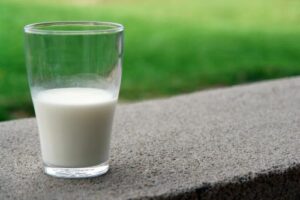
Average monthly milk prices in February 2025 continued to decline and after a peak in December 2024 fell to 17.3 UAH/kg, and as of the end of the month dropped to 17 UAH/kg, according to the Union of Dairy Enterprises of Ukraine (UDEP).
According to the report, the price level of February 2025 was 13.5% lower than the price level of December 2024 and 16.5% higher than the price level of February 2024.
At the same time, the average price for milk in February 2025, expressed in euros (for the domestic quality basis), amounted to almost EUR 40/100 kg – against EUR 45.7 in December 2024 and EUR 42.7 in January 2025.
In February 2025, the average price, expressed in euros and converted to the euro basis, fell below EUR47/100 kg, down from EUR53.7 in December 2024 and EUR50.2 in January 2025.
The price level in February 2025 (in terms of EUR) was 13% lower than the price level in December 2024 and 10% higher than the price level in February 2024.
The ratio between the price levels in Ukraine and the EU and Polish averages in February 2025 was 87.5% to the EU average (in November-December 2024 it was over 98%), and 87% to the Polish average.
According to experts, the respective ratios have “rolled back” to the level of September 2024, and the competitiveness of domestic dairy products increased in February 2025.
According to the UMPA, the situation with milk prices in other regions of the world is as follows: in the United States and Brazil, the price increased to EUR 51 and EUR 42.5, respectively, in New Zealand, prices stabilized at EUR 41.5.
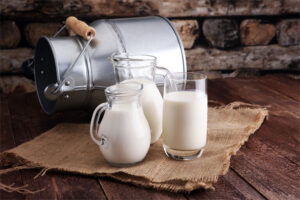
Prices for extra-virgin milk in Ukraine in January 2025 decreased by 8% to 18.5 UAH/kg compared to December 2024, according to the Union of Dairy Enterprises of Ukraine (UDEP).
Analysts noted that milk prices in January 2025 were 23% higher than in January 2024 and 33% higher than in June 2024.
At the same time, the growth rate of raw milk prices in Ukraine (in UAH) in the second half of 2014 was 2.3 times higher than in the EU (in EUR – 1.8 times). The average price in January 2025, expressed in EUR (for the domestic quality basis), amounted to almost EUR 42.7/100 kg – compared to EUR 45.7/100 kg in December 2024 and EUR 44.7 in November 2024.
“The price in EUR decreased by almost 7% compared to December 2024, and by 5.5% compared to November 2024. At the same time, the price increased by 34% compared to June 2024; by 18.5% compared to January 2024. The average price, expressed in euros and converted to the euro base, decreased to EUR47.3/100 kg in January 2024 – from almost EUR51/100 kg in December 2024,” the UMPA stated.
The experts drew attention to the fact that the ratio between the price levels in Ukraine and the EU/Poland in January 2024 was 87% to the EU average and 82.5% to the Polish average.
“The respective ratios have “rolled back” to the level of October 2024 – the competitiveness of domestic dairy products has increased in January 2025,” the industry association summarized.
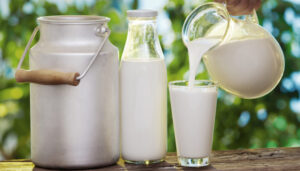
In January, Ukraine increased imports of dairy products by 55% compared to the same period last year, Infagro news agency reported.
“The market of fresh dairy products began to revive in February. Sales growth is rather slow, there is no positive dynamics that was observed in the same period of previous years. In February, prices began to stabilize, but unfortunately, by this time they had already reached a very high level,” analysts said.
Experts suggested that in order to stimulate sales, it would be right to reduce prices, especially for sour cream and cottage cheese. Therefore, the major players will try to resort to promotional sales with significant price reductions more often in the near future. In any case, there should definitely be no further price increases, they believe.
“Domestic producers should already be concerned about a significant increase in imports of fresh dairy products. In January, they were imported by 55% more than in the same period last year. And if earlier Ukraine mainly imported yogurt and various cheese products, in January several hundred tons of cheap Polish milk were imported. Polish imports of fresh dairy products accounted for 60% of the total volume,” the industry publication emphasized.
Exports of fresh dairy products are also growing, but not at the same rate as imports. The main export market for Ukrainian fresh dairy products remains Moldova, 88%, Infagro summarized.